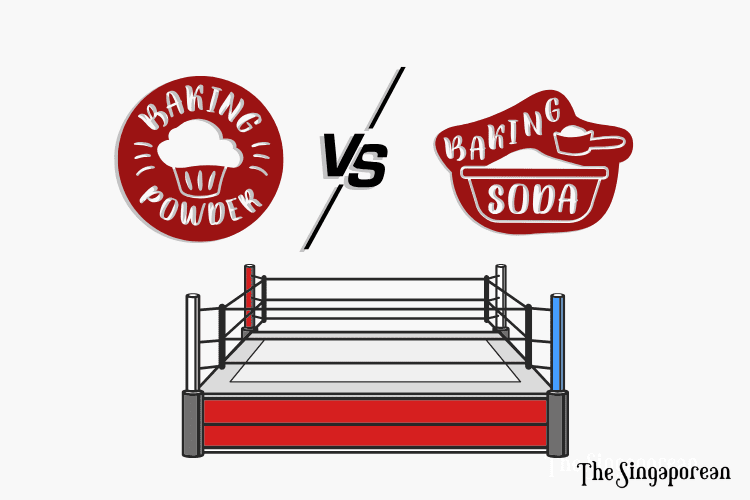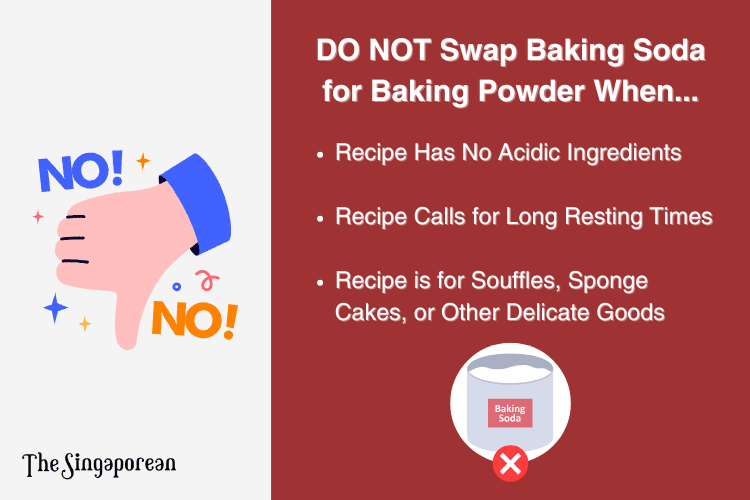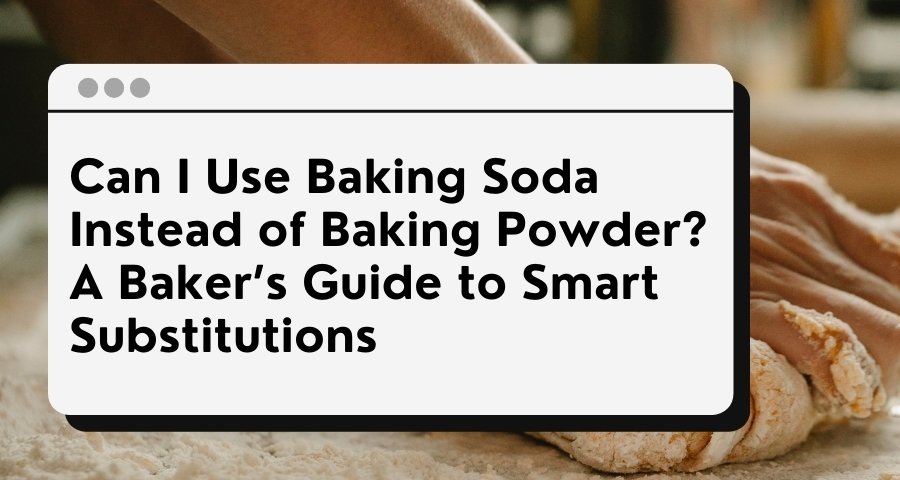You’re halfway through a baking session, ingredients lined up, and then you realise … you’re out of baking powder.
Panic sets in.
The first thought that probably comes to mind is: Can I use baking soda instead of baking powder?
It seems like a logical swap since they’re both leavening agents, but the truth is, they aren’t interchangeable in a one-to-one ratio.
If you’ve ever wondered whether you can make this switch without ruining your recipe, this guide breaks down the science behind both ingredients, how to substitute correctly, and when to avoid the swap altogether. Whether you’re baking at home or taking a baking class in Singapore, understanding this essential trick can save your recipes from disaster.
Baking Soda vs. Baking Powder: What’s the Difference?

Both baking soda and baking powder help baked goods rise, but they work differently. Here’s what sets them apart:
- Baking soda (sodium bicarbonate) is a base and needs an acid (like lemon juice, vinegar, or buttermilk) to activate. Without an acid, it won’t produce the carbon dioxide needed for leavening.
- Baking powder contains both an acid and a base, meaning it activates on its own when mixed with liquid and heated.
This key difference is why you can’t just swap one for the other without adjustments. Using baking soda without an acid will leave your baked goods flat and potentially with an unpleasant metallic or bitter taste.
How to Substitute Baking Soda for Baking Powder
Yes, it’s possible to use baking soda instead of baking powder, but it requires an extra step. Since baking powder already contains an acid, you’ll need to add an acidic ingredient to the mix when substituting.
The Correct Substitution Formula
If your recipe calls for 1 teaspoon of baking powder, replace it with:
- ¼ teaspoon of baking soda
- ½ teaspoon of cream of tartar or 1 teaspoon of lemon juice/vinegar
This combination mimics the effect of baking powder, ensuring your baked goods rise properly while maintaining the right balance of acid and base.
Choosing the Right Acid for the Swap
To activate baking soda, you’ll need an acid that complements your recipe’s flavour profile. Here are some options:
- Lemon juice – Works well in cakes, muffins, and citrus-flavoured goods.
- Vinegar – Great for pancakes and quick breads.
- Buttermilk – Ideal for biscuits, waffles, and fluffy cakes.
- Yoghurt – A good choice for denser baked goods like banana bread.
- Cream of tartar – The most neutral option, keeping the recipe’s flavour unchanged.
- Molasses – Can work in darker baked goods, like gingerbread.
Each acid brings a slightly different flavour, so choose one that enhances, rather than overpowers, your recipe.
Mistakes to Avoid When Swapping Baking Soda for Baking Powder
Using the wrong substitution method can affect both taste and texture. Here are a few common mistakes to watch out for:
- Too much baking soda – If you go overboard, your bake may taste soapy or metallic.
- Not adding an acid – Baking soda alone won’t provide the necessary rise.
- Overloading on acidic ingredients – Adding too much acid can make your bake too tangy or sour.
- Expecting identical results – Since baking powder contains slow-release leavening agents, baked goods may rise differently with baking soda.
Following the correct ratio will help ensure your bake still turns out fluffy and well-balanced.
A Simple Kitchen Experiment to See the Difference
If you’re curious about how baking soda compares to baking powder in real baking scenarios, try this quick experiment:
- Make a simple pancake batter and split it into two bowls.
- In one bowl, use baking powder as directed in the recipe.
- In the second bowl, replace the baking powder with baking soda + an acid (using the correct formula).
- Cook both batches and observe the differences in texture, rise, and taste.
This experiment will show how the swap works in real time and give you a better understanding of how leavening agents affect your kitchen experiments.
When You Should NOT Substitute Baking Soda for Baking Powder
While the substitution works in many cases, there are times when it’s best to stick to baking powder.
Avoid Substituting When:
- The recipe has no acidic ingredients – If you can’t add an acid, baking soda won’t work.
- The recipe requires long resting times – Baking soda reacts immediately, while baking powder provides sustained leavening, making it more suitable for doughs that need resting.
- You’re making delicate goods like soufflés or sponge cakes – These recipes rely on precise chemical reactions, so substitutions may affect the final texture.

For these cases, it’s best to use baking powder or find an alternative recipe.
Final Thoughts: Is It Worth the Swap?
So, can you substitute baking soda for baking powder? Yes—but only if you understand how to do it correctly. If you follow the right formula and add the necessary acid, your baked goods should turn out just fine.
However, not all recipes are forgiving, so it’s always good to experiment first with simple batters like pancakes or muffins before attempting substitutions in more delicate recipes.
If you’re interested in learning more about ingredient swaps, baking techniques, and troubleshooting baking mistakes, a hands-on workshop might be a great way to improve your skills. Understanding how different ingredients interact can help you bake with confidence.
For more baking tips, you might also want to explore why some baking techniques make a difference in the final texture and structure of your kitchen experiments.

